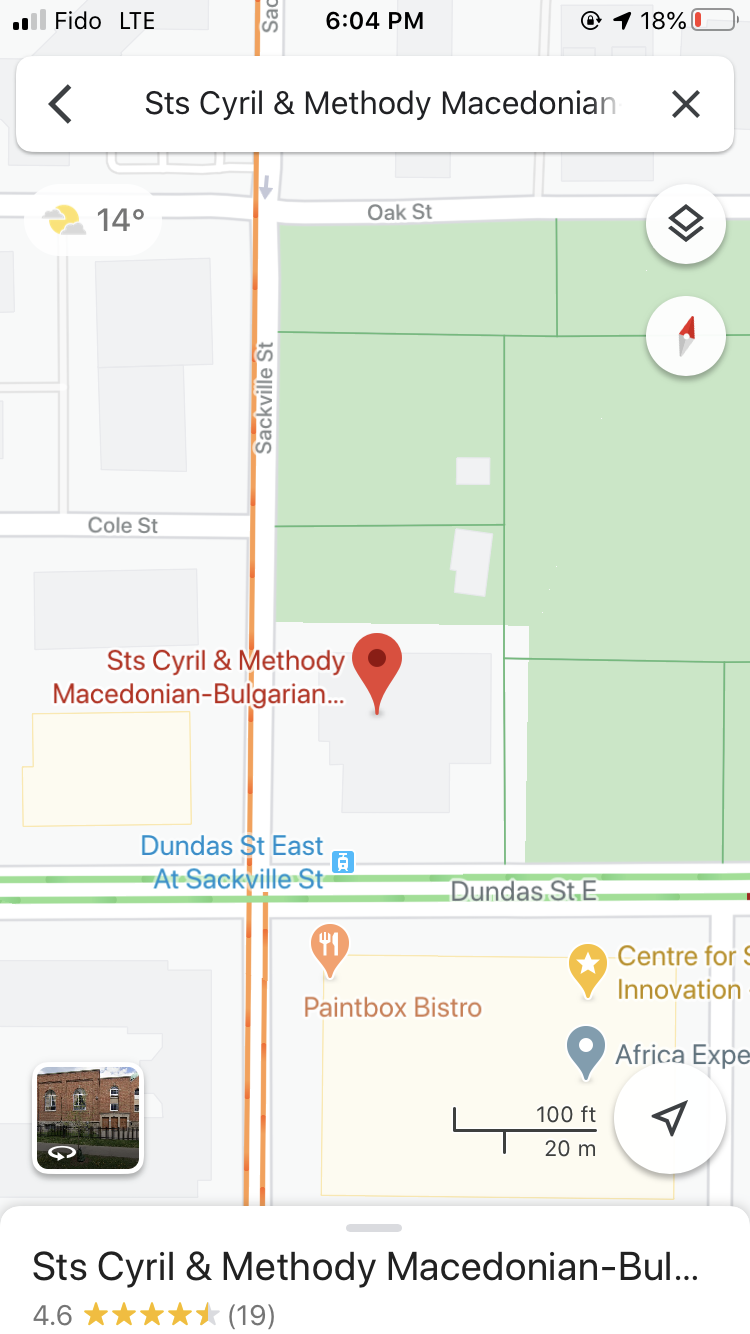In our session this week as Regent Turtles, we used the time to dig deeper into our interest in the role of security in influencing the use of, and access to, the various houses of worship in Regent Park. Although we had decided on using photography as our primary medium last week, we had differing opinions on whether to arrange our photos into a photo essay, or expressing our ideas in a hypothetical tour guide or brochure of religious institutions in Regent Park. With our theme of security firmly in place, we felt the best way to express the dichotomies of what physical and community security entails, by deciding to do both! We’re now thinking of telling two stories: using the brochure, we want to share how religious houses of worship are advertising and sharing their space to the broader community for various uses while using the photo essay to demonstrate the challenges and infrastructure in place to protect these places. The resources we’ll need will primarily be covering printing costs, both for the brochure and the photo essay prints during our exhibition.
Since Huda was away this session, we decided to build up our level of research on the background and history of the churches and mosques in the neighbourhood, in order to get a better sense of how religious centres became embedded in the fabric of the community over time. As we went through the pictures we took last time, we found some interesting patterns. In terms of the churches, two are of the Macedono-Bulgarian Eastern Orthodox faith: Sts. Cyril and Methody Church at 237 Sackville Street, and St. George’s Church at 17 Regent Street. Both of them, as historic centres of the neighbourhood’s erstwhile Macedonian heritage in the early 20th century, had prominently displayed “hall for rent” signs on our walk last week, and upon further research, are available for community use for events ranging from weddings and corporate events to movie shootings and concerts. However, at Sts. Cyril and Methody, we also noticed a second church listed at the same address. As it turns out, St. Silouan Orthodox Church, founded recently in 2002 as a multi-ethnic place of worship, is also located in the same church building and opens on particular days for prayer. An interesting question about a multi-faith and multi-use presence in religious space is something we hope our pictures will discuss in the brochure.
St. Bartholomew’s Anglican Church, located at 509 Dundas St. E, was closed when we walked by last week, as it primarily operates at midday during the week. In contrast to the limited times available among churches for prayer, the two mosques in the neighbourhood, Masjid Rahmah, and Masjid Omar Bin Al-Khattab were open for nearly all hours of the day to accommodate the full day of prayers in the Muslim faith. Both located on Parliament Street at the edge of Regent Park, the mosques are more integrated with commercial storefronts in their building locations. However, as we noticed last week, Masjid Omar Bin Al-Khattab, in particular, featured an extensive closed-circuit security system. We’re hoping to get in contact with these institutions over the next two weeks to clarify how these different forms of openness and protection each of the houses of worship is displayed. Of course, each house of worship aims to balance the need for community accessibility, while maintaining the safety of those attending prayer: understanding how each does so offers a unique perspective on religion in the built environment.
In addition to this research, we edited an earlier timeline of our goals in order to get prepared for upcoming work. Our table is below:
As we begin taking pictures next week, with Huda joining us again, we’re excited to get out into the neighbourhood and decide on the angles and views our pictures will assume. We’re also looking forward to starting to write our thoughts on how houses of worship serve as intersections of religion and the state, and how much of each interacts with the other in urban space here in Regent Park!
Maps showing Sts. Cyril and Methody and St. Silouan occupying the same physical building at Dundas and Sackville
The Regent Turtles are Kamila, Rushay, Xinyi, Huda.



